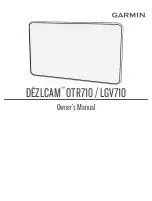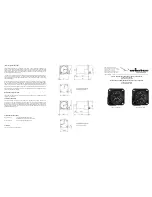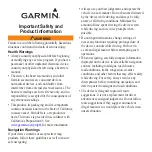
GPS Receivers A1029
V3.2 - 02/06
User’s Manual
Page 35 of 43
11 Applications and Hints
11.1 Minimum Configuration
Please refer to chapter 3.1 Minimum Configuration for details. In addition, for opti-
mized start-up behavior it is strongly recommended to add a battery back-up circuit
(see chapter 3.4)!
11.2 Antenna Sensor Pin (ANTSTAT)
The Antenna Sensor pin is an output pin. It provides correct status information for
an active GPS antenna with current consumption in the defined range! For an ac-
tive antenna with a current consumption outside this range, an external circuit could
detect the connection or a disconnection or a short circuit.
•
Logic low when:
Iant < 9mA
•
Logic high when:
9mA > Iant < 16mA
•
Logic low when:
Iant > 16mA
The threshold values are typical values. Values in an application can defer towards
a wider range.
Iant = DC current of GPS antenna (DC current through sensing resistor on GPS
module)
The Antenna Sensor pin can detect when an active antenna is connected. It can
also detect when the antenna is short-circuited or disconnected for some reason.
Please consider that the Antenna Sensor can provide no useful output when the
GPS antenna is fed externally, i.e. the VANT pin is not used (the sensing resistor
on the GPS module can not sense any DC current).
11.3 Gain select pin (GS)
The LNA Gain Select pin is an input pin.
•
Pin at GND (low) or open: LNA Gain 14dB (default)
•
Pin at Vcc (high):
LNA Gain 4dB
It is recommended to leave the pin unconnected. This allows for amplification of
weaker signals and a firmware implementation of an automatic gain control (AGC)
function.
Summary of Contents for A1029
Page 2: ...This page was intentionally left blank...
Page 42: ......









































